Portugal may be small but it packs a punch and its relaxed vibe and friendly locals makes travelling this historic country a pleasure. However, the Portuguese have a bad rep when it comes to driving, and statistics indicate that this is highly justified. Nevertheless, things are improving and the relatively empty roads and short distances between stop-offs make Portugal an ideal road trip destination. Just follow our tips to ensure driving in Portugal is a pleasure and not a pain. 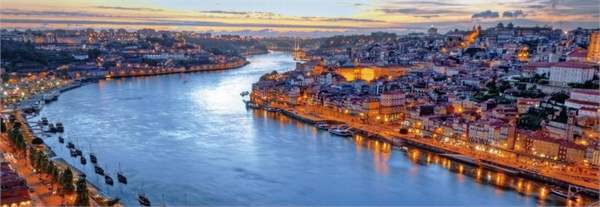 On your marks: There are six types of roads in Portugal with the following speed limits:
On your marks: There are six types of roads in Portugal with the following speed limits:
Type of road Speed limit
- Motorway (Autoestrada - AE) 120km/h (74mph)
- Main Highway (Itinerários Principais - IP) 100km/h (62mph)
- Secondary Road (Itinerários Complementares - IC) 100km/h (62mph)
- National Road (Estradas Nacionais - EN) 90km/h (55mph)
- Local Road (Estradas Municipais) 50km/h (31mph)
- Coexistence Zones 20km/h (12mph)
There are two types of motorway: those with tollbooths and ‘Via Verde’ (Green Lane), and those with only electronic tolls. Motorways with tollbooths operate the same as Irish toll roads with payment by cash, card or tag. The Via Verde lane is only for those who possess Via Verde identification and you pay the toll via direct debit. You can set this up before you go. Motorways identified at the beginning with "Electronic toll only" have no tollbooths and you must have an electronic payment system in place. Get all the information here: http://www.portugaltolls.com/en/web/portal-de-portagens/home 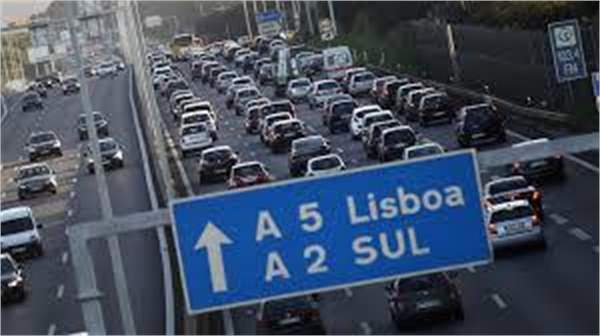 Get set: By law, you must:
Get set: By law, you must:
- Have a full driver’s licence, no learners allowed.
- Be at least 17 years old, although if renting a car you may encounter problems if under the age of 18.
- Carry your driver’s licence with you whilst driving.
- Have at least third party insurance.
- Wear a seatbelt in the front and rear at all times, if fitted.
- Not use a mobile phone whilst driving, but you may use a handsfree kit. If you do not have a handsfree kit, you may use a single earphone piece of equipment, but using two earphones is illegal.
- Ensure children under 1.35 metres (or up to 12 years old if shorter than 1.35 metres) sit in a child safety seat with appropriate restraints.
- Turn on dipped headlights during the daytime when visibility is poor and when driving through tunnels.
- Not have a blood alcohol limit (BAC) exceeding 0.5g/l. If you have held your driver’s licence for less than three years, you must not have a BAC exceeding 0.2g/l.
- Not drive under the influence of psychotropic substances. Police test drivers involved in serious injury crashes for drugs and can administer roadside drug tests if they suspect you are driving whilst under the influence of drugs.
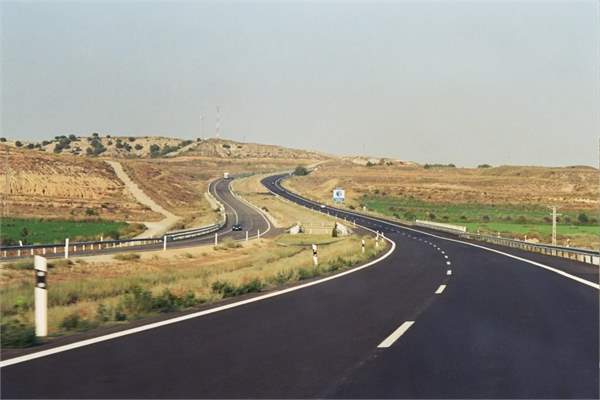 Go: In general, Portuguese drivers are notorious for tailgating. In addition to this, they drive very fast, hence the bad rep and high road accident statistics. However, if you maintain a safe (no, safer than that) driving distance from the car in front of you and keep to a speed you are comfortable with, the tailgater will overtake you soon enough, usually on a blind bend. Just mind your own driving and you should be ok. Speeding is pretty much the norm on Portuguese roads, and speed traffic lights are in operation to help tackle this. The lights operate on a sensor positioned a few meters in front of the traffic lights. If you see flashing orange lights, you should make sure that you’re doing no more than the speed limit as you pass otherwise the traffic lights will turn red. Be aware that even if you are doing the correct speed they can be triggered by someone else speeding up behind you. In addition, indicators haven’t really caught on in Portugal, although things are getting a little better, so just be vigilant. Drivers will turn with out indicating and will indicate and continue straight, especially at roundabouts. Speaking of roundabouts, you must give way to traffic already on the roundabout, whichever lane they are in and only occupy the right-hand (outside) lane if you are taking the first exit - you risk a fine if you drive in the outside lane and do not take the first exit. Remember to always drive on the right and, if not otherwise indicated, give way to traffic coming from your right. It is illegal to overtake in the right-hand lane in free-flowing traffic.
Go: In general, Portuguese drivers are notorious for tailgating. In addition to this, they drive very fast, hence the bad rep and high road accident statistics. However, if you maintain a safe (no, safer than that) driving distance from the car in front of you and keep to a speed you are comfortable with, the tailgater will overtake you soon enough, usually on a blind bend. Just mind your own driving and you should be ok. Speeding is pretty much the norm on Portuguese roads, and speed traffic lights are in operation to help tackle this. The lights operate on a sensor positioned a few meters in front of the traffic lights. If you see flashing orange lights, you should make sure that you’re doing no more than the speed limit as you pass otherwise the traffic lights will turn red. Be aware that even if you are doing the correct speed they can be triggered by someone else speeding up behind you. In addition, indicators haven’t really caught on in Portugal, although things are getting a little better, so just be vigilant. Drivers will turn with out indicating and will indicate and continue straight, especially at roundabouts. Speaking of roundabouts, you must give way to traffic already on the roundabout, whichever lane they are in and only occupy the right-hand (outside) lane if you are taking the first exit - you risk a fine if you drive in the outside lane and do not take the first exit. Remember to always drive on the right and, if not otherwise indicated, give way to traffic coming from your right. It is illegal to overtake in the right-hand lane in free-flowing traffic. 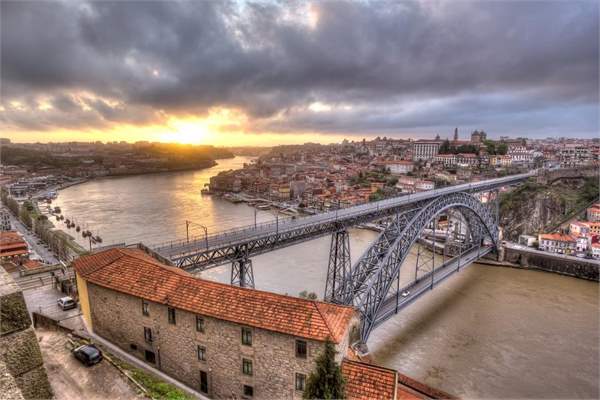 It is illegal to drive slower than 50km/h (31mph) on the motorway unless there's a traffic jam of course. If piling luggage on a roof rack, your baggage must not exceed the vehicle's length by more than 55cm at the front and 45cm at the rear. Make sure you fit it properly and securely. If you are bringing over or renting bikes, it is illegal to carry them on the back of a car. So, you'll need a roof mounted bike rack or will need to fit them inside the car. Regarding bikes, drivers must keep a minimum distance of 1.5 metres from cyclists and reduce speed when overtaking them. Driving in the cities isn’t too stressful, but do bear in mind that the streets are very narrow, parking is extremely limited and you have to give way and watch out for people alighting from trams in the streets. Furthermore, coexisting zones are in operation giving cyclists permission to use the full width of the roads, for games to be played in the streets and, actually, that all sounds far too much to deal with on holiday. Ditch the car and take the very cool old style trams to get around - a much better way to see the city sights. Places to Visit: Of course, the Algarve, Lisbon and Porto are the top places to visit in Portugal but here are some other worthwhile visits a little off the beaten track: Aveiro Aveiro is a bustling coastal city in the central region. Called the ‘Venice of Portugal’ due to the expansive lagoon and canals that weave their way throughout the city, it is dotted with bridges, colourful fishermen’s houses and the famous Portuguese ‘azulejo’ tiles, which make this a picture perfect setting and ideal place to explore.
It is illegal to drive slower than 50km/h (31mph) on the motorway unless there's a traffic jam of course. If piling luggage on a roof rack, your baggage must not exceed the vehicle's length by more than 55cm at the front and 45cm at the rear. Make sure you fit it properly and securely. If you are bringing over or renting bikes, it is illegal to carry them on the back of a car. So, you'll need a roof mounted bike rack or will need to fit them inside the car. Regarding bikes, drivers must keep a minimum distance of 1.5 metres from cyclists and reduce speed when overtaking them. Driving in the cities isn’t too stressful, but do bear in mind that the streets are very narrow, parking is extremely limited and you have to give way and watch out for people alighting from trams in the streets. Furthermore, coexisting zones are in operation giving cyclists permission to use the full width of the roads, for games to be played in the streets and, actually, that all sounds far too much to deal with on holiday. Ditch the car and take the very cool old style trams to get around - a much better way to see the city sights. Places to Visit: Of course, the Algarve, Lisbon and Porto are the top places to visit in Portugal but here are some other worthwhile visits a little off the beaten track: Aveiro Aveiro is a bustling coastal city in the central region. Called the ‘Venice of Portugal’ due to the expansive lagoon and canals that weave their way throughout the city, it is dotted with bridges, colourful fishermen’s houses and the famous Portuguese ‘azulejo’ tiles, which make this a picture perfect setting and ideal place to explore.  Evora Evora is a well-preserved medieval town steeped in history. This UNESCO World Heritage centre is an enchanting place to delve into the past. Evora has more than 4,000 historic structures including the old Roman walls and temples. Sure, it’s such a great place Lotus even named a car after it. Maybe.
Evora Evora is a well-preserved medieval town steeped in history. This UNESCO World Heritage centre is an enchanting place to delve into the past. Evora has more than 4,000 historic structures including the old Roman walls and temples. Sure, it’s such a great place Lotus even named a car after it. Maybe. 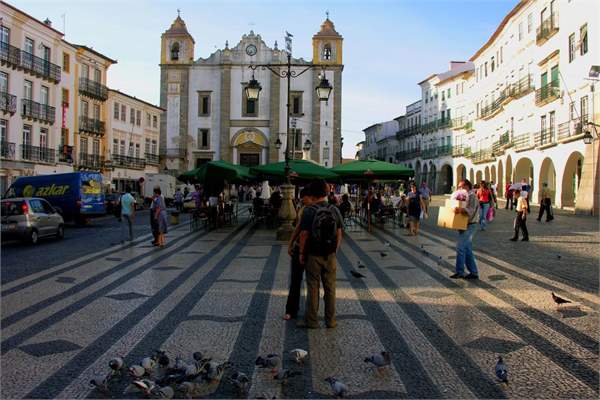 Sintra Just a short trip from Lisbon and nestled in the beautiful Sintra Mountains and along the coast, Sintra has some wonderful natural and architectural sites including a protected natural park, plenty of palaces and an intriguing Moorish castle. It is a wonderful place to chill out, wander the streets and enjoy the local market.
Sintra Just a short trip from Lisbon and nestled in the beautiful Sintra Mountains and along the coast, Sintra has some wonderful natural and architectural sites including a protected natural park, plenty of palaces and an intriguing Moorish castle. It is a wonderful place to chill out, wander the streets and enjoy the local market. 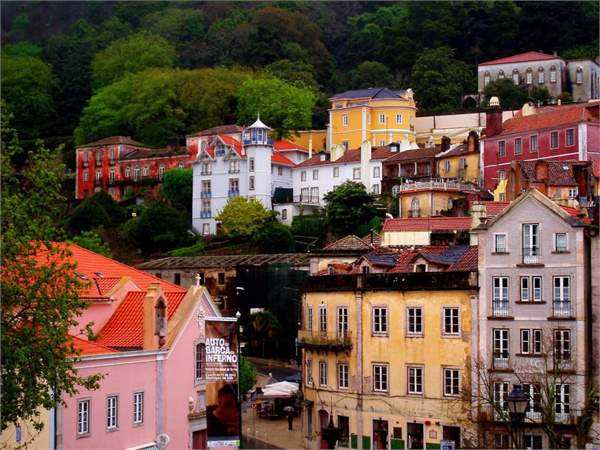 Recommended Roads:
Recommended Roads:
- Travelling from Castelo Branco in the Central Region to Gois, situated in a deep narrow valley, the EN-112 is a driver’s dream road. It is 90km (56 miles) of no traffic, great road surface, good visibility and roughly 400 bends to negotiate, test and excite you. Get your motor running.
- The N-222 from Peso de Regua to Pinhao was, just this year, voted the ‘World’s Best Road’ according to a survey done by Avis. The road cuts through the heart of the Douro Valley, a famed wine region, and follows the Douro River. The road stretches for 43km (27 miles), has 93 bends and is a ‘must drive’ for petrol-heads visiting Portugal.
- The N-267 from São Marcos da Serra to Monchique is just 24km (15 miles) long but is a firm favourite with motorcyclists due to its good visibility, lack of traffic and long wide corners as well as some hairpin bends. As you are in the hills of the Algarve, the views are sweet too.